Students turn back to books as more school districts implement phone bans
Students at a school district in Kentucky are putting down their phones and cracking books at a record pace now that devices are banned during class, district officials said.
The head-spinning shift from digital to analog is well underway at Jefferson County Public Schools, which serves nearly 97,000 students as Kentucky's largest school district. Library books are flying off the shelves following the enactment of a statewide ban of electronic devices in classrooms, librarians told Newsweek.
At Ballard High School in Louisville, where just 31 percent of roughly 2,000 students meet state reading proficiency standards, 891 books were checked out in August, compared to 533 last year — an increase of 67 percent.
"Oh, definitely," librarian Stephanie Conrad said when asked if she believes the phone ban factored into the spike. "We anticipated a really big increase in book circulation, so we planned for that over the summer to really make books available and plan for any kind of downtime so that students wouldn't be tempted to look at their phones."
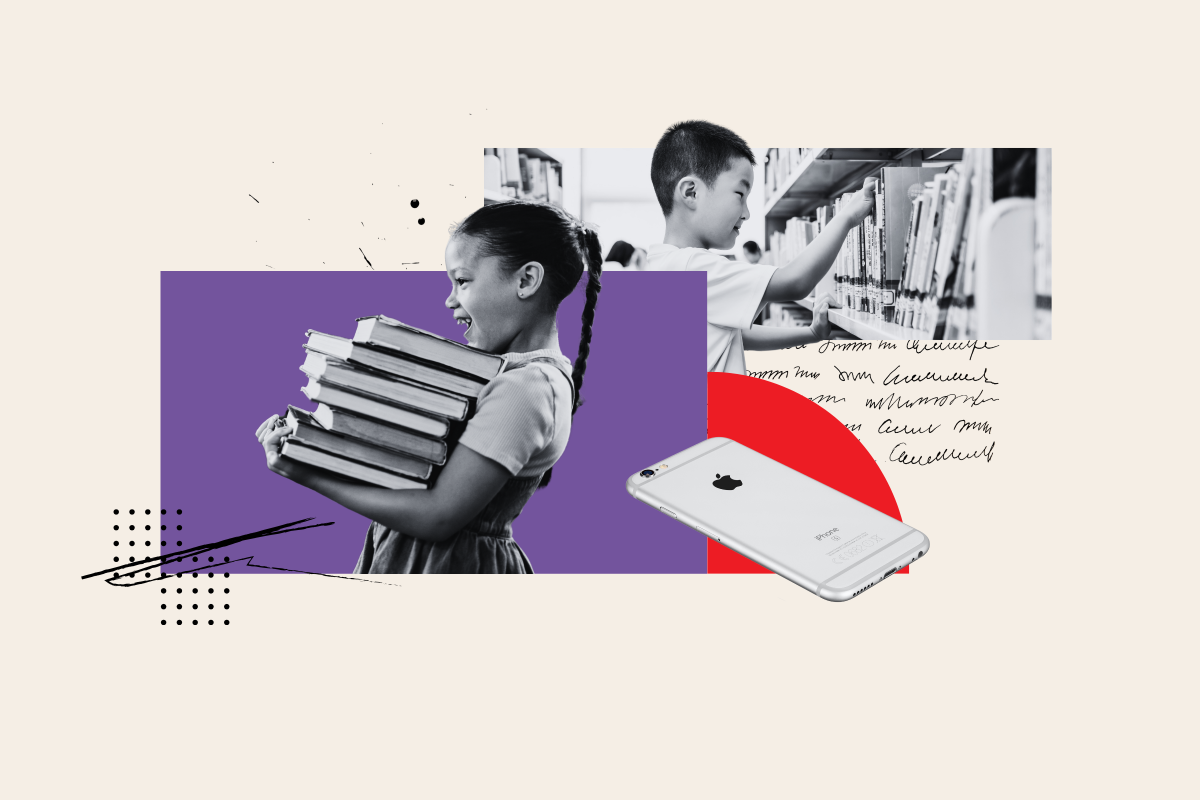 Students at a school district in Kentucky have checked out a record number of library books in August following the enactment of a statewide cellphone ban.
Students at a school district in Kentucky have checked out a record number of library books in August following the enactment of a statewide cellphone ban.
Newsweek Illustration/Getty Images/Canva
Students at a school district in Kentucky have checked out a record number of library books in August following the enactment of a statewide cellphone ban.
Students at a school district in Kentucky have checked out a record number of library books in August following the enactment of a statewide cellphone ban.
Newsweek Illustration/Getty Images/Canva
Conrad, a librarian of two decades, said the trend is continuing into September, as students are borrowing 39 percent more books than last year.
"Right now, the big trend is mysteries, thrillers or horror books, but particularly the mysteries, the whodunits, are very popular right now," Conrad said.
Some students at Ballard have turned to books to avoid getting in trouble with their phones, while others are fostering what will hopefully become a lifelong pastime, Conrad said.
"In order to support the kids' needs when they aren't allowed to have their cellphones during the day, I've worked with teachers so that they have a regular rotating schedule to come to the library," she said. "So, they'll come once every two to three weeks, depending on their curriculum and schedule."
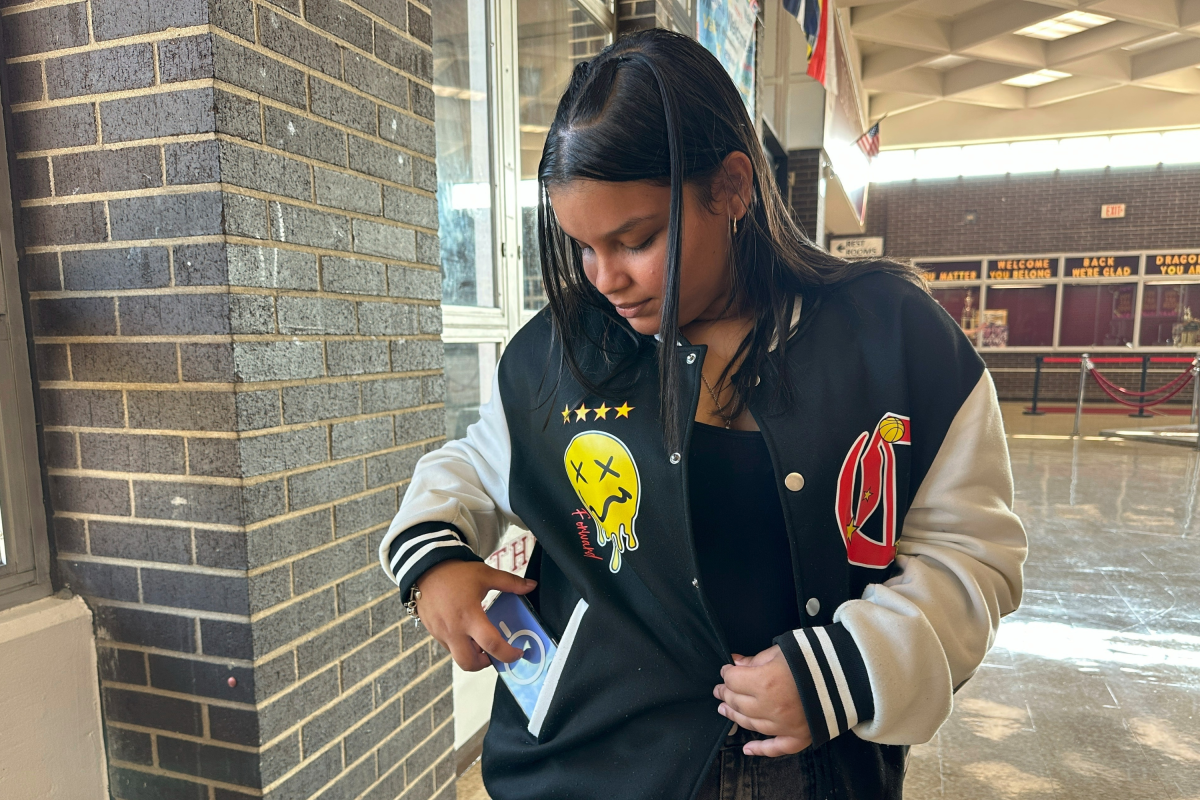 Mia Rivera puts her cellphone away before the start of class on August 15 at Doss High School in Louisville, Kentucky, where district officials say students are turning to books following the enactment of a...
Mia Rivera puts her cellphone away before the start of class on August 15 at Doss High School in Louisville, Kentucky, where district officials say students are turning to books following the enactment of a statewide K-12 ban.
More
AP Photo/Dylan Lovan
Mia Rivera puts her cellphone away before the start of class on August 15 at Doss High School in Louisville, Kentucky, where district officials say students are turning to books following the enactment of a...
Mia Rivera puts her cellphone away before the start of class on August 15 at Doss High School in Louisville, Kentucky, where district officials say students are turning to books following the enactment of a statewide K-12 ban.
More
AP Photo/Dylan Lovan
Conrad tries to capitalize on the teens' newfound attention by hosting book talks or introducing familiar titles.
"We've made sure we have lots and lots of book displays," she said. "Books that people have read, books that they want to talk about. We're just doing everything we possibly can to make sure books are readily available and enticing."
Students are also doing less scrolling and more page-turning at Pleasure Ridge Park High School, where voracious readers have already borrowed more than 1,200 books during the first 17 days of the school year.
That's nearly half of last year's total, district officials said.
Huge spikes were also reported at Butler High School, where 23 percent of students are proficient in state reading assessments, but 40 percent have already checked out books this year — or double the number who did so last year, according to JCPS data.
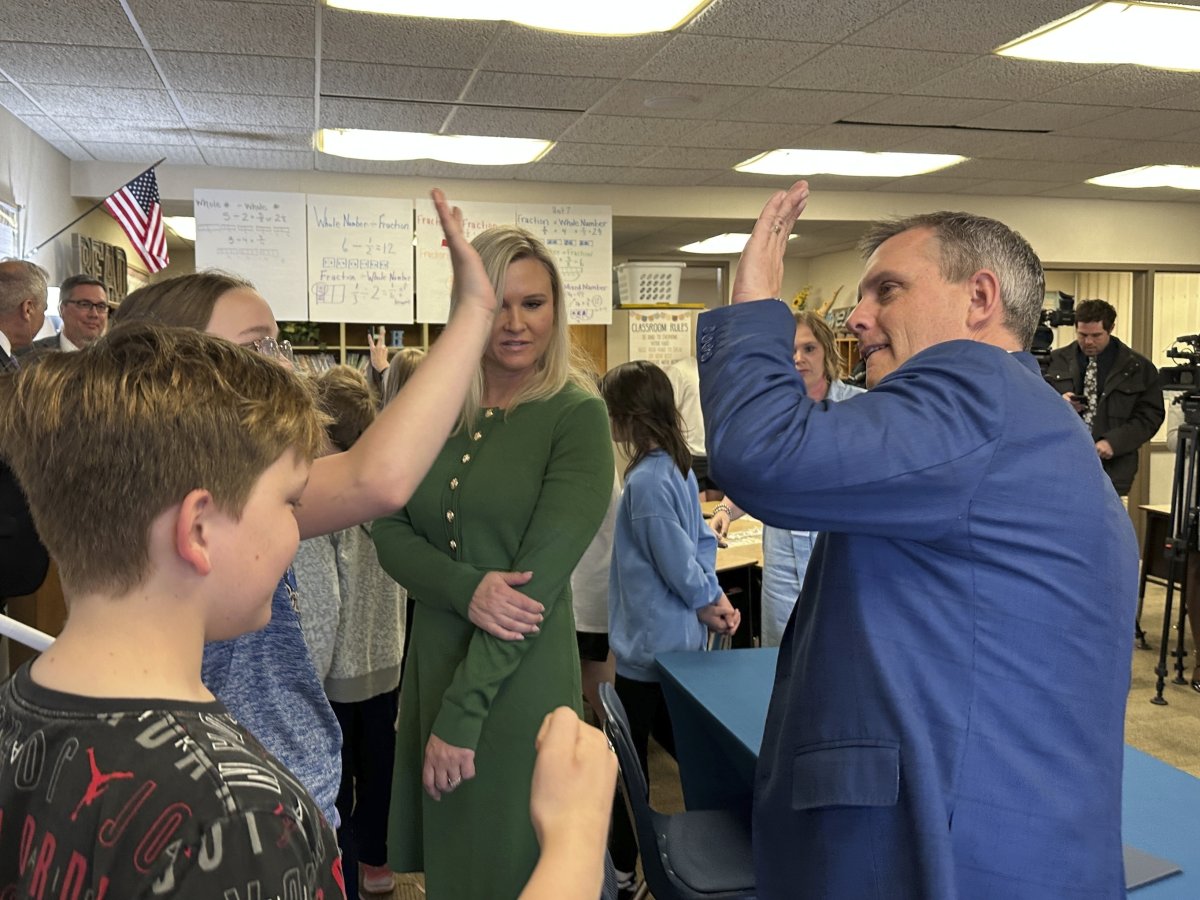 North Dakota Gov. Kelly Armstrong, right, high-fives a student at Centennial Elementary School in Bismarck on April 25 after signing a bill for a "bell-to-bell" cellphone ban for public school K-12 students.
North Dakota Gov. Kelly Armstrong, right, high-fives a student at Centennial Elementary School in Bismarck on April 25 after signing a bill for a "bell-to-bell" cellphone ban for public school K-12 students.
AP Photo/Jack Dura
North Dakota Gov. Kelly Armstrong, right, high-fives a student at Centennial Elementary School in Bismarck on April 25 after signing a bill for a "bell-to-bell" cellphone ban for public school K-12 students.
North Dakota Gov. Kelly Armstrong, right, high-fives a student at Centennial Elementary School in Bismarck on April 25 after signing a bill for a "bell-to-bell" cellphone ban for public school K-12 students.
AP Photo/Jack Dura
The massive surge in Kentucky hasn't been limited to teens, as students at Crosby Middle School and Farnsley Middle School borrowed 2,088 books last month, compared to 662 in August 2024.
The district-wide turnaround is especially striking since interest in books had gradually dissipated across age groups as smartphone and social media platforms grew in popularity, Conrad said.
"It was kind of eroding year by year, no matter what we did," she said. "It's hard to compete with the flashiness of TikTok when you're reading a book. You turn the page slower than you do the TikToks. It's just really difficult for books in general to compete. And now, with the cellphone bans, we're seeing not just a gradual increase, we're seeing those numbers shoot up. It's just really exciting."
No Cells, Bell-to-BellRestrictions on the use of electronic devices in classrooms are currently in place in 35 states, a remarkable pace for an idea that only recently gained grassroots steam. Kentucky's new law took effect in late June, while 16 other states and the District of Columbia started this school year with new policies, according to the Associated Press.
Proponents of the push to ban phones in classrooms say students become more engaged and allows them to focus on assignments instead of wasting time on social media or other websites.
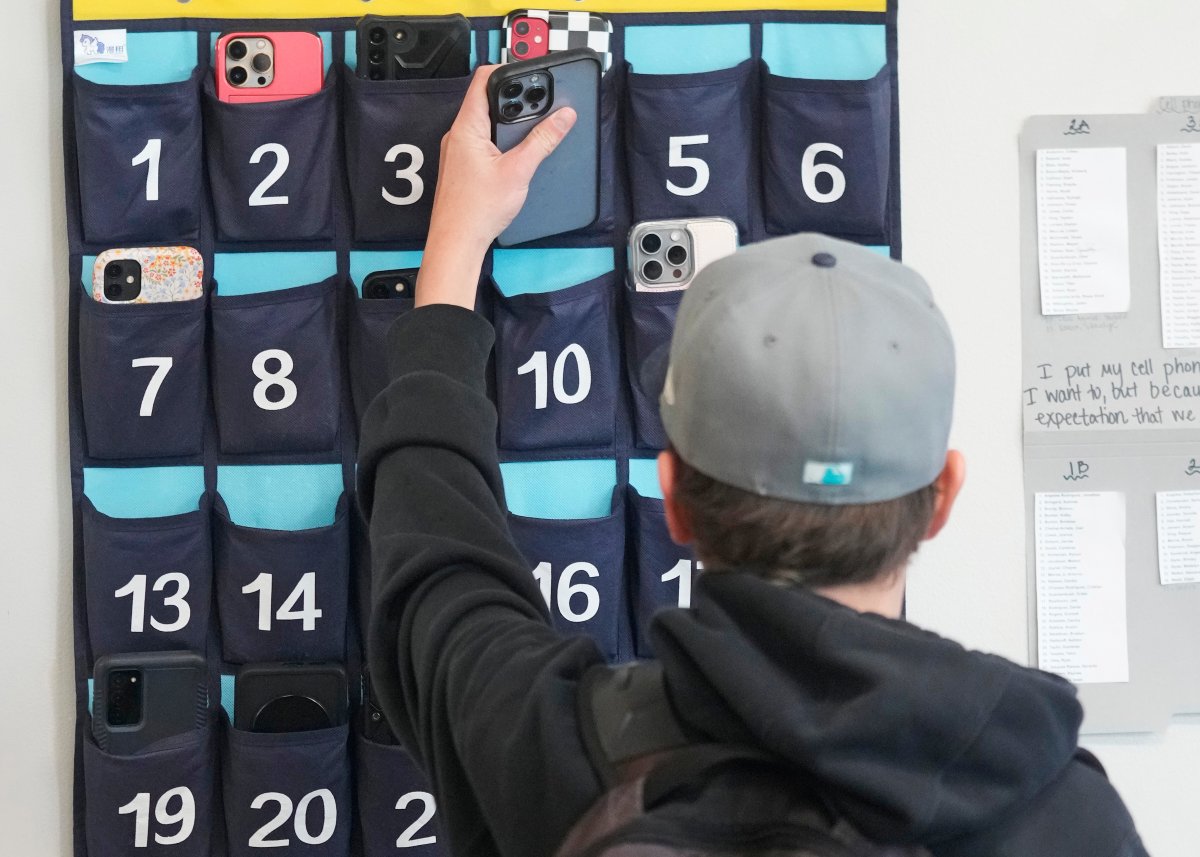 A ninth-grade student puts his cellphone into a holder as he enters class at Delta High School in Delta, Utah, on February 23, 2024. A state law passed in July requires students to keep devices...
A ninth-grade student puts his cellphone into a holder as he enters class at Delta High School in Delta, Utah, on February 23, 2024. A state law passed in July requires students to keep devices away unless being used for educational purposes.
More
AP Photo/Rick Bowmer, file
A ninth-grade student puts his cellphone into a holder as he enters class at Delta High School in Delta, Utah, on February 23, 2024. A state law passed in July requires students to keep devices...
A ninth-grade student puts his cellphone into a holder as he enters class at Delta High School in Delta, Utah, on February 23, 2024. A state law passed in July requires students to keep devices away unless being used for educational purposes.
More
AP Photo/Rick Bowmer, file
"If there was an emergency situation in school, who should your child be paying attention to?" Rep. James Tipton, R-Kentucky, told WHAS in February prior to the ban. "They should be paying attention to that responsible adult inside the room that's supervising them. Should they be talking on the phone, making noise if there's potential danger outside?"
Some parents have argued that their students need access to their phones in case of an emergency like school shooting.
In 2023, Florida became the first state to pass a law restricting the use of phones during class in public schools, but allowed districts to enforce their own policies. Gov. Ron DeSantis then expanded the ban in May to include the entire day for elementary and middle school students.
At Hillsborough County Public Schools in Tampa, the phone ban "seems to having a positive impact," with students becoming more engaged in class and interacting with classmates, chief of communications Tanya Arja said.
The proliferation of phones restrictions in schools comes as 16 percent of U.S. teens ages 13 to 17 report using TikTok "almost constantly," according to Pew Research Center data.
Among popular platforms, YouTube dominates the teen landscape, with 90 percent reporting they use the site, followed by TikTok (63) and Instagram (61).
Phone Bans Gather Steam NationwideNew York Gov. Kathy Hochul announced in May that the state would become the largest state to implement bell-to-bell restrictions on cellphones in public K-12 schools, insisting that young minds don't succeed if they're "clicking and scrolling" rather than learning.
Smartphones are also banned during lunch and study hall periods under Hochul's policy, but students can still use phones without internet access, as well as laptops or tablets provided by schools.
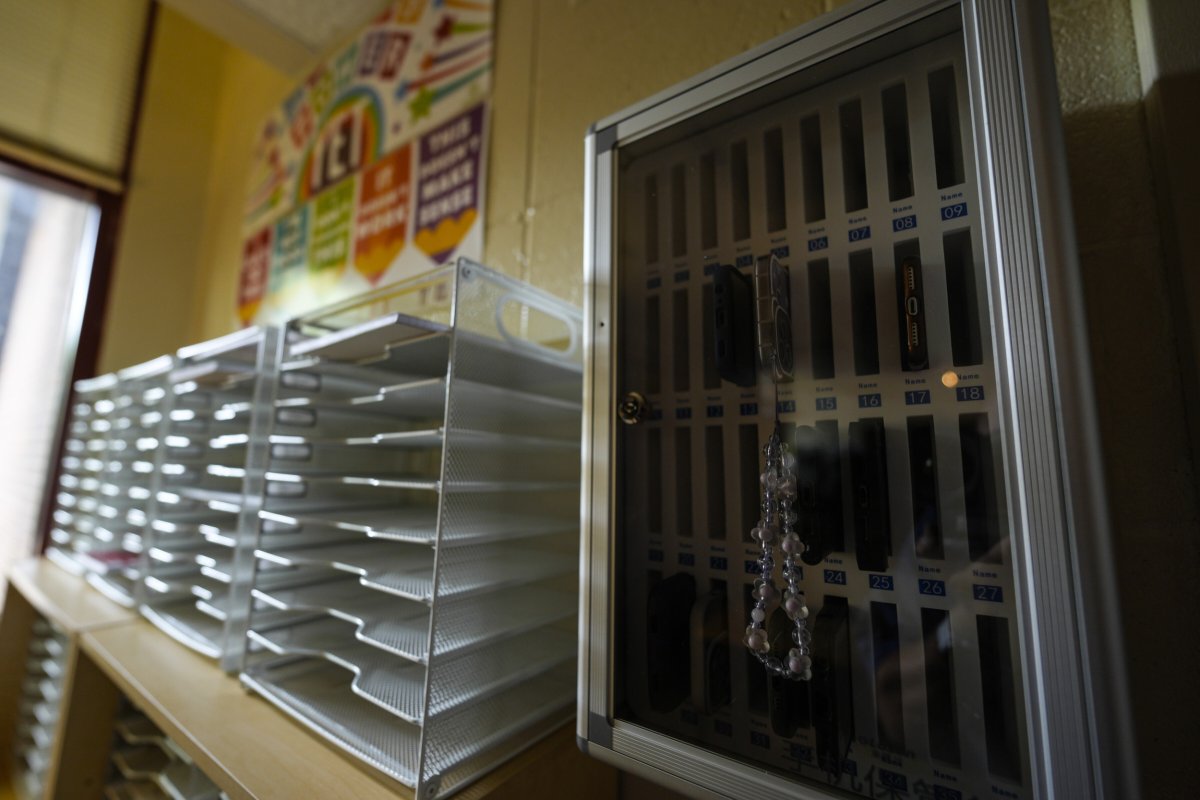 Atlanta Public Schools students, including those at Ronald McNair Senior High School, use cellphone lockers this year under a new "up and away" policy announced in July.
Atlanta Public Schools students, including those at Ronald McNair Senior High School, use cellphone lockers this year under a new "up and away" policy announced in July.
AP Photo/Mike Stewart
Atlanta Public Schools students, including those at Ronald McNair Senior High School, use cellphone lockers this year under a new "up and away" policy announced in July.
Atlanta Public Schools students, including those at Ronald McNair Senior High School, use cellphone lockers this year under a new "up and away" policy announced in July.
AP Photo/Mike Stewart
Nearly one million public school students in New York City, the nation's largest public school district, returned to classrooms on September 4. It's unclear whether the ban has impacted school libraries citywide like the ongoing rush within Jefferson County Public Schools in Kentucky.
Data on library use and the impact of New York's phone ban will be available later this semester, NYC Public Schools staff told Newsweek.
"Anecdotally, some schools have noted that students are checking out books regularly, and visiting their libraries for activities, to play board games, and to have a space to relax," a source said Thursday.
Education officials in other states with newly implemented cellphone bans also praised the switch, which has riled some students and parents who cite safety concerns.
"We have received overwhelming positive feedback about the impact this policy has had on increasing student engagement and supporting teachers' efforts to lead their classrooms," the South Carolina Department of Education told Newsweek in a statement.
The agency is now studying the policy's statewide impact on referrals related to behaviors such as disrupting class, cheating or bullying, officials said.
Teachers in South Carolina, which banned devices in January, reported a 3 percent increase in the number of students who were "free to focus" during the school day after the policy was enacted, according to a state education report obtained by Newsweek.
"Not allowing them across the entire state and district helped make the enforcement easier," one educator said. "No teacher is allowed to have their own rules regarding them, so the enforcement is more equal and enforced. Students are less likely to look at their phones now and a huge teacher burden of behavior management has been lifted and I couldn't be happier about that."
Another teacher, meanwhile, credited South Carolina's new policy for the setting up conditions for the "best year" inside classrooms.
"It has been a pleasure teaching this year with the policy in place," the teacher said. "At my school we have had very few instances with cell phones because students and parents were aware of the policy and knew that it was a state and district mandate!"
In Oregon, where policies prohibiting phones during school take effect on January 1, districts must adopt protocols by October 31, education officials said. But some districts, including Portland, already prohibit personal electronic devices during school hours. Like Kentucky, the change is already translating to more time spent with books. Circulation data shows a 15 percent increase in school library circulation this school year compared to the same span in 2024, a Portland Public Schools spokesman told Newsweek.
The District of Columbia Public Schools also started prohibiting students from using phone during school hours for the 2025-26 school year, but it's too soon to discern the new policy's impact, officials said.
As districts consider revising their phone rules in the wake of the broad early success of 'bell-to-bell' policies, 74 percent of U.S. adults support banning middle and high school students from using devices during class — an increase of 6 percent from last fall, the Pew Research Center reported in July.
The share of Americans who back daylong bans also increased from 36 to 44 percent, but 46 percent still oppose all-day restrictions on phones.
A YouGov poll conducted in late August found that 64 percent of U.S. adults support banning student phone use altogether in K-12 schools.